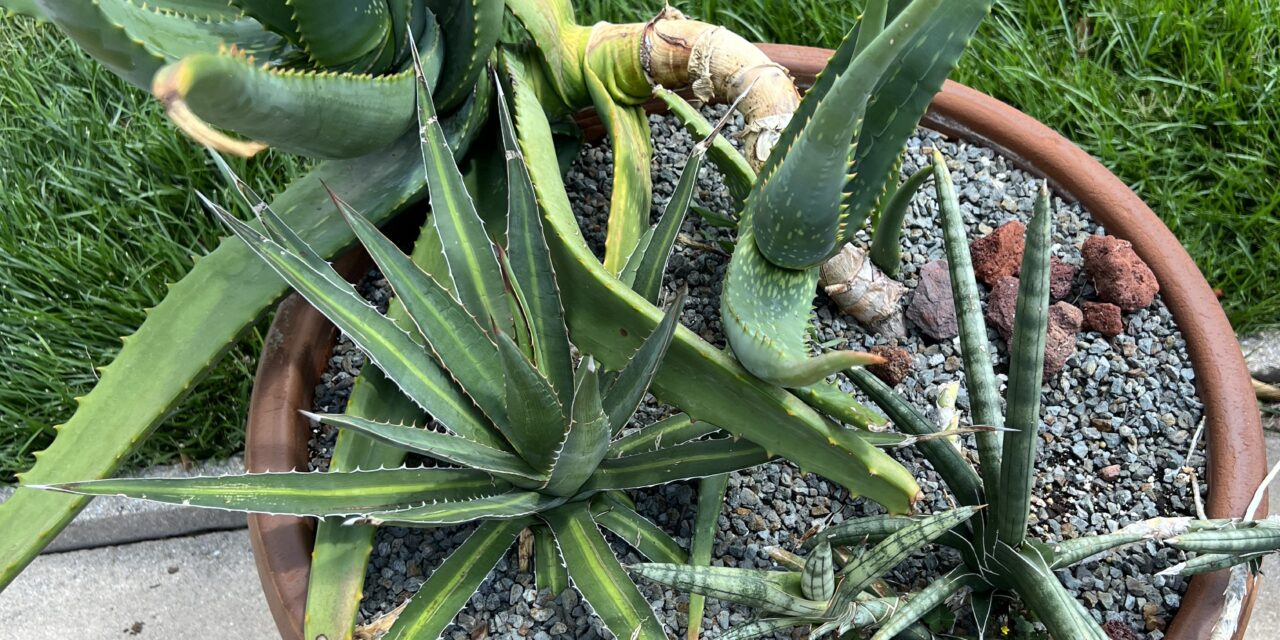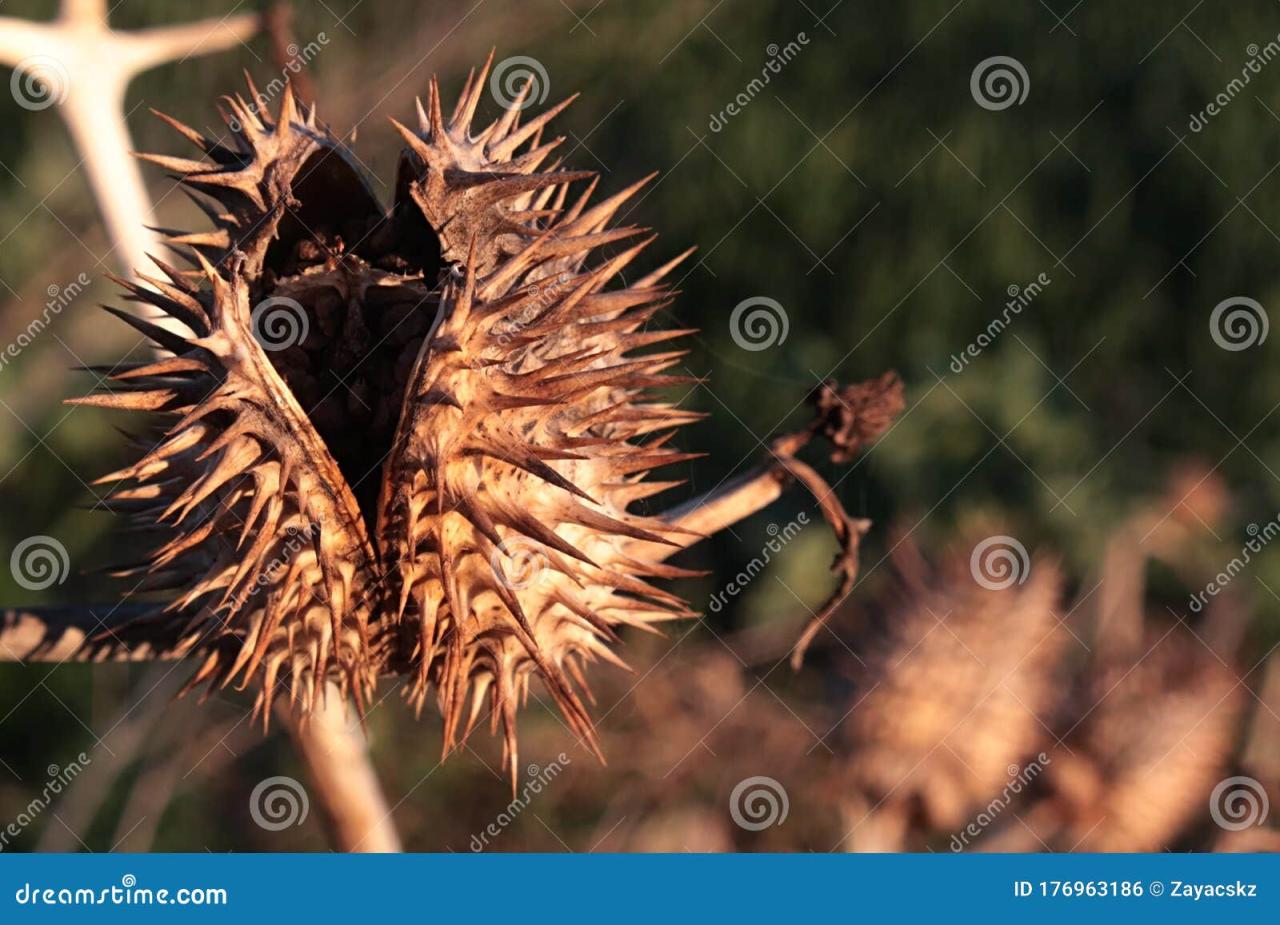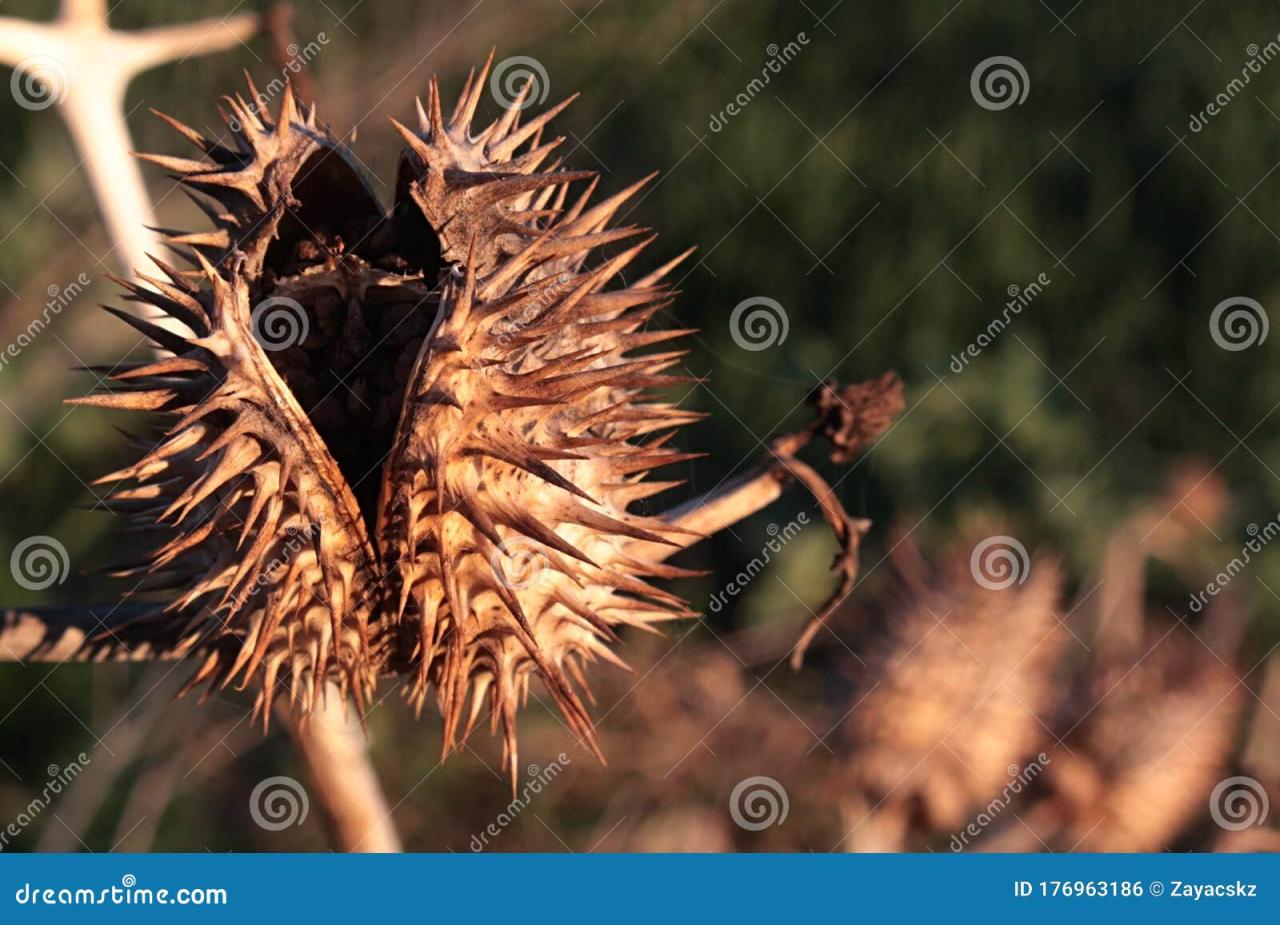Why Spiky Seeds Are the Key to Natural Pest Defense? This seemingly simple question opens a window into a world of intricate adaptations and evolutionary strategies. Spiky seeds, far from being mere oddities, represent a brilliant solution to the age-old struggle for survival in the plant kingdom.
From the sharp barbs of burdock to the prickly armor of cockleburs, these seemingly simple structures hold the key to protecting vulnerable seeds from hungry herbivores and ensuring the perpetuation of their species. This article explores the fascinating world of spiky seeds, unveiling the secrets behind their defense mechanisms, dispersal strategies, and their vital role in maintaining ecological balance.
The evolution of spiky seeds is a testament to the power of natural selection. Plants that developed spiky seed coats were better equipped to protect their offspring from being eaten by herbivores. This selective pressure led to the diversification of spiky seeds, each with its unique adaptations.
For example, the burdock’s spiky seeds are designed to cling to animal fur, facilitating long-distance dispersal. Cockleburs, on the other hand, rely on their sharp spines to deter small mammals from consuming them. The spiky seeds of the acacia tree, with their hard and pointed structures, effectively deter herbivores from nibbling on their pods.
The Evolutionary Advantage of Spiky Seeds
Spiky seeds, with their seemingly unwelcoming exterior, are not just a quirk of nature. They are a testament to the power of evolution and the constant struggle for survival in the plant kingdom. These prickly structures, far from being mere decorative elements, are crucial adaptations that enhance the seed’s chances of survival and successful dispersal.
Just as spiky seeds deter hungry critters, mastering plant propagation techniques can help you cultivate a lush garden without constantly replenishing your stock. Learning how to propagate your favorite plants, like African violets, can be a rewarding experience, How to Propagate African Violets and Never Buy Plants Again , and save you money in the long run.
Similarly, understanding the natural defenses of plants, like the use of spiky seeds, can help you cultivate a thriving garden that’s less susceptible to pests.
The Role of Natural Selection in Shaping Spiky Seeds
The development of spiky seeds is a prime example of natural selection in action. Plants with spiky seeds are more likely to survive and reproduce than those with smooth or less-defensive seeds. This is because spiky seeds offer a significant advantage against seed predators, ensuring that the plant’s genetic material is passed on to the next generation.
Imagine a scenario where a plant produces both spiky and smooth seeds. The spiky seeds, with their formidable exterior, deter herbivores and insects from consuming them. These seeds then have a greater chance of reaching the ground and germinating, leading to new plants.
The smooth seeds, on the other hand, are more vulnerable to predation, resulting in a lower chance of survival and reproduction. Over time, through natural selection, the plants producing spiky seeds become more prevalent, as they have a greater fitness advantage.
Types of Spiky Seeds and Their Adaptations
The world of spiky seeds is incredibly diverse, showcasing a wide range of adaptations. Each type of spiky seed has evolved to meet the specific challenges of its environment and the predators it faces.
- Burrs:These seeds are covered in hooks or barbs that cling to animal fur, facilitating long-distance dispersal. The common burdock ( Arctium lappa) is a classic example, its burrs inspired the invention of Velcro.
- Spines:Spines are sharp, rigid projections that deter herbivores from consuming the seeds. Examples include the prickly pear cactus ( Opuntia ficus-indica) and the hedgehog cactus ( Echinocereus engelmannii).
- Awned Seeds:Awned seeds have long, bristle-like appendages called awns. These awns can twist and rotate in response to changes in humidity, allowing the seeds to burrow into the soil and escape the harsh surface conditions. The common grass species ( Poaceae) are known for their awned seeds.
Comparison of Spiky Seed Defense Mechanisms
Spiky seeds offer a unique defense strategy compared to other seed dispersal methods.
- Wind Dispersal:Seeds adapted for wind dispersal are typically lightweight and have wing-like structures. While this method allows for wide dispersal, it leaves them vulnerable to predation, as they are exposed for longer periods.
- Animal Dispersal:Some plants rely on animals to consume their fruits and excrete the seeds, allowing for dispersal. However, this strategy relies on the animal’s preference for the fruit, and there is no guarantee that the seeds will be dispersed to suitable locations.
- Ballistic Dispersal:Plants with ballistic dispersal mechanisms, like the wood sorrel ( Oxalis), eject their seeds with force. This method is effective for short-distance dispersal but does not offer protection from predators.
Spiky seeds, by contrast, provide a more direct and robust defense against predation. They offer a physical barrier that discourages herbivores from consuming them, significantly increasing their chances of survival and successful germination.
How Spikes Deter Herbivores
Spiky seeds, a marvel of natural engineering, represent a potent defense mechanism against herbivores. These sharp, pointed structures act as physical barriers, deterring animals from consuming the seeds and ensuring their survival.
The Physical Impact of Spikes
Spikes directly affect herbivores by creating a physical barrier, making it difficult or painful to consume the seeds. This is achieved through various mechanisms:
- Sharpness:The sharp points of the spikes can puncture the mouth, tongue, or digestive tract of herbivores, causing pain and discomfort.
- Size and Density:Densely packed, large spikes can create a physical obstacle, preventing herbivores from effectively grasping or manipulating the seeds.
- Toughness:Spikes are often made of hard, rigid materials, making them difficult to break or crush, further discouraging consumption.
The Psychological Impact of Spikes
Beyond the physical impact, spikes also exert a psychological effect on herbivores.
- Fear and Avoidance:The presence of spikes can trigger a learned avoidance response in herbivores, associating them with unpleasant experiences and prompting them to seek alternative food sources.
- Sensory Discomfort:The visual and tactile perception of spikes can cause discomfort and apprehension, leading to a reluctance to approach or consume the seeds.
Herbivores Overcoming Spiky Defenses
While spiky seeds provide a strong defense, some herbivores have evolved adaptations to overcome these barriers:
- Specialized Mouthparts:Some herbivores have developed specialized mouthparts, such as thick, leathery lips or strong jaws, that can withstand the pain and damage caused by spikes.
- Dietary Flexibility:Certain herbivores have evolved to consume a wide range of food sources, including spiky seeds, and have developed tolerance to their effects.
- Selective Feeding:Some herbivores have learned to selectively consume only the most palatable parts of plants, avoiding the spiky seeds.
The Role of Spikes in Seed Dispersal
Spikes, while primarily serving as a defense mechanism against herbivores, also play a significant role in seed dispersal. The shape and structure of spiky seeds can facilitate their movement through various dispersal mechanisms, including wind, water, and animals. This section explores the various ways spiky seeds leverage their unique morphology for effective dispersal.
Seed Dispersal by Wind
Spiky seeds can be dispersed by wind, particularly those with a large surface area and light weight. The spikes act as “wings” or “parachutes,” increasing the seed’s surface area and allowing it to catch the wind more effectively. This enables the seeds to travel long distances, facilitating colonization of new habitats.
For instance, the seeds of dandelion, with their distinctive parachute-like structures, can be carried by wind for miles.
Seed Dispersal by Water
Spiky seeds can also be dispersed by water, particularly those that grow in aquatic or semi-aquatic environments. The spikes can act as “floats” or “anchors,” helping the seeds stay afloat and drift to new locations. For example, the seeds of water lilies, with their spiky outer layer, can float on the water surface and be dispersed by currents or wind.
Seed Dispersal by Animals
Spiky seeds can be dispersed by animals, especially those with hooked or barbed spikes. These spikes can attach to the fur or feathers of animals, allowing the seeds to travel long distances before being deposited in a new location. This is a common dispersal strategy for seeds of plants like burdock, whose hooked seeds readily attach to the fur of passing animals.
Effectiveness of Different Dispersal Strategies
The effectiveness of different dispersal strategies for spiky seeds varies depending on factors such as seed size, spike morphology, and the environment.
Dispersal Mechanism |
Effectiveness |
Examples |
|---|---|---|
Wind |
High for lightweight seeds with large surface area |
Dandelion, maple seeds |
Water |
Moderate for seeds adapted to aquatic environments |
Water lilies, coconut |
Animals |
High for seeds with hooked or barbed spikes |
Burdock, cocklebur |
The Importance of Spiky Seeds for Ecosystem Balance

Spiky seeds, while seemingly a simple evolutionary adaptation, play a crucial role in maintaining the delicate balance of ecosystems. Their unique characteristics influence plant communities, animal populations, and overall biodiversity, creating a complex web of interconnected relationships.
Impact of Spiky Seeds on Plant Communities, Why Spiky Seeds Are the Key to Natural Pest Defense
Spiky seeds contribute to the diversity of plant communities by influencing the distribution and abundance of different plant species. This is achieved through various mechanisms:
- Seed Dispersal:Spiky seeds are often dispersed by animals, which inadvertently carry them to new locations. This allows plants to colonize new areas, reducing competition for resources and increasing overall plant diversity.
- Seed Dormancy:The spikes can help protect seeds from harsh environmental conditions, allowing them to remain dormant until favorable conditions arise. This ensures the survival of the species and contributes to the long-term stability of plant communities.
- Competition:Spiky seeds can create a competitive advantage for certain plant species. They can deter herbivores, allowing the plants to establish themselves more effectively and outcompete other species.
Impact of Spiky Seeds on Animal Populations
Spiky seeds have a significant impact on animal populations, shaping their feeding behaviors, dispersal patterns, and even influencing their evolutionary adaptations.
- Herbivory:Spiky seeds act as a natural defense mechanism against herbivores. They deter animals from consuming them, preventing excessive seed predation and ensuring the survival of the plant species.
- Seed Dispersal:While some animals avoid spiky seeds, others have adapted to consume or transport them. This dispersal by animals, known as zoochory, allows plants to expand their range and colonize new habitats.
- Evolutionary Adaptations:The presence of spiky seeds can influence the evolution of animal populations. Animals that can effectively handle spiky seeds, either through specialized digestive systems or behavioral adaptations, have a competitive advantage in accessing a valuable food source.
Spiky Seeds and Human Interactions: Why Spiky Seeds Are The Key To Natural Pest Defense
Humans have long recognized the unique characteristics of spiky seeds, incorporating them into various aspects of their lives. From serving as food sources to playing a role in traditional medicine, spiky seeds have left an indelible mark on human history and continue to offer potential for future applications.
Utilization in Food and Medicine
Spiky seeds have been a part of human diets for centuries, providing essential nutrients and contributing to diverse culinary traditions. For instance, the seeds of certain prickly plants, like the prickly pear cactus, are consumed as a source of carbohydrates, fiber, and vitamins.
Just as spiky seeds deter hungry insects and animals, many plants have evolved unique defense mechanisms. For example, African violets, with their delicate blooms, rely on their leaves to ward off pests. Propagating these plants at home can be a rewarding experience, and a detailed guide can be found here.
Understanding how these plants protect themselves can inspire us to develop more sustainable and natural pest control methods, mimicking nature’s ingenuity.
Traditional medicine has also embraced spiky seeds, recognizing their potential medicinal properties. For example, the seeds of the saw palmetto plant are used in herbal remedies to address prostate health issues.
Challenges and Opportunities in Agriculture and Horticulture
Spiky seeds present both challenges and opportunities for agricultural and horticultural practices. The presence of spines can hinder harvesting and processing, leading to potential damage to machinery and injuries to workers. However, the same spiky nature can be advantageous in deterring pests and protecting crops from herbivores.
- Challenges:The spiky nature of seeds can make harvesting and processing more difficult, leading to increased labor costs and potential equipment damage. The spines can also cause injury to workers during handling.
- Opportunities:Spiky seeds can offer natural pest control, reducing the need for chemical pesticides and promoting sustainable agricultural practices. The spiky exterior can also enhance seed dispersal by clinging to animal fur, aiding in the natural propagation of plants.
Potential Applications in Modern Technology and Design
The unique properties of spiky seeds have inspired innovative applications in modern technology and design. Their ability to cling and adhere has led to the development of bio-inspired adhesives, potentially replacing traditional synthetic materials. The structural integrity of spiky seeds, with their rigid yet flexible design, has sparked interest in the field of biomimicry, seeking to replicate their strength and resilience in engineering applications.
- Bio-inspired Adhesives:The adhesive properties of spiky seeds have inspired the development of bio-inspired adhesives that mimic their ability to cling to surfaces. These adhesives have potential applications in medical devices, wound healing, and even microelectronics.
- Biomimicry in Engineering:The structural integrity of spiky seeds, with their rigid yet flexible design, has sparked interest in the field of biomimicry. Engineers are exploring ways to replicate the strength and resilience of these seeds in structures, materials, and devices, potentially leading to lighter, stronger, and more sustainable solutions.
Final Wrap-Up

The world of spiky seeds is a testament to the ingenuity of nature. These seemingly simple structures are not just defensive mechanisms but also play a crucial role in seed dispersal, maintaining biodiversity, and influencing human interactions. From the ancient use of spiky seeds in traditional medicine to their potential applications in modern technology, these remarkable adaptations continue to inspire and fascinate.
As we delve deeper into the mysteries of spiky seeds, we gain a greater appreciation for the complex and interconnected nature of the natural world.
Detailed FAQs
How do spiky seeds benefit the plant?
Spiky seeds provide several benefits to the plant, including protection from herbivores, enhanced seed dispersal, and increased chances of survival for the next generation.
Are all spiky seeds designed to deter herbivores?
While many spiky seeds are designed to deter herbivores, some species have evolved spiky seeds for other purposes, such as attaching to animal fur for dispersal or facilitating wind dispersal.
Are there any disadvantages to having spiky seeds?
One potential disadvantage of spiky seeds is that they can make it difficult for the seeds to germinate if they become entangled in dense vegetation or soil.
What are some examples of animals that have evolved to overcome spiky seed defenses?
Some animals, such as birds and rodents, have developed specialized beaks or teeth that can handle spiky seeds. Others, like deer, have learned to avoid eating seeds with sharp spines.
